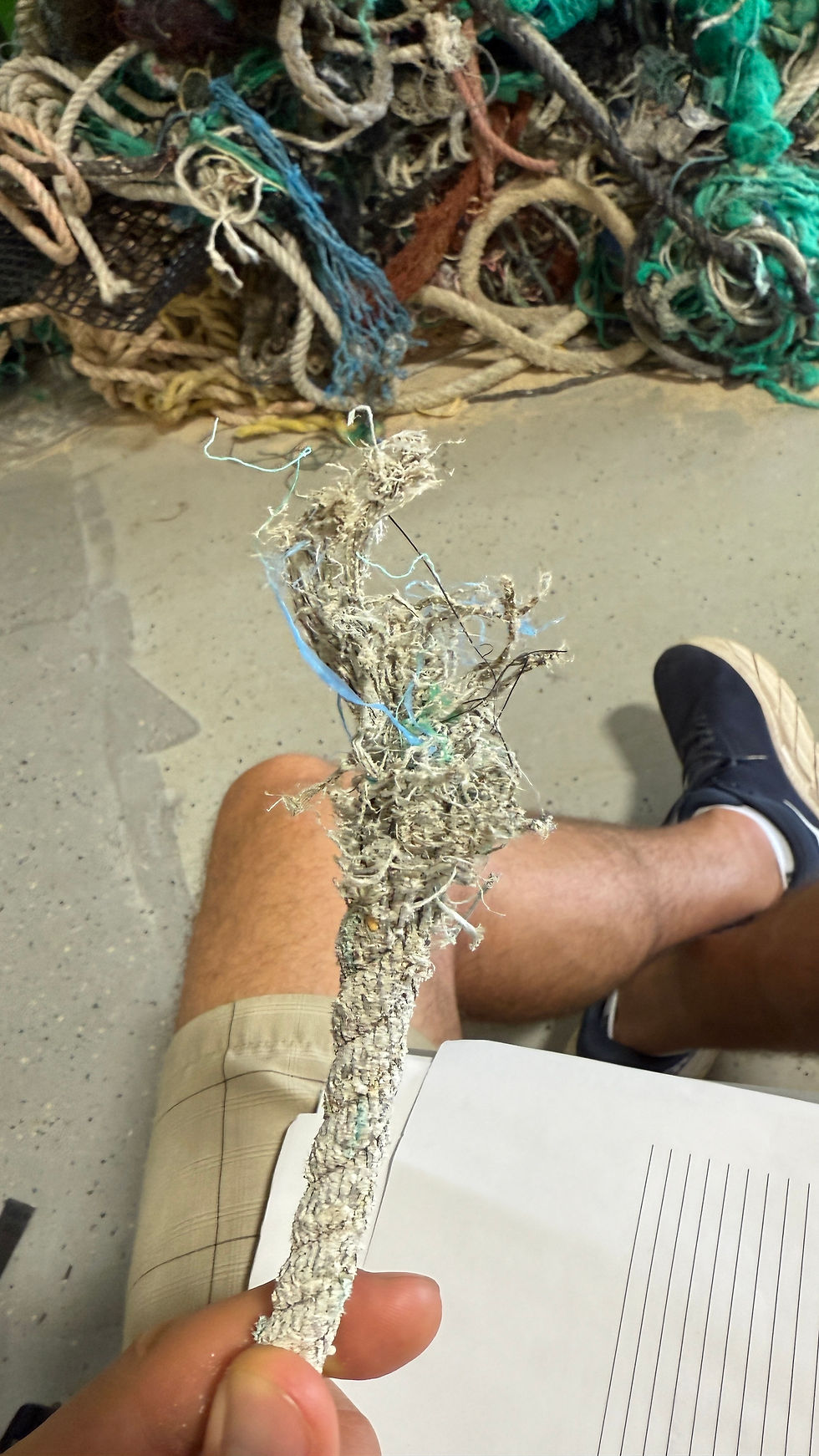This Month’s Dispatch: The Realities of Plastic Recycling in Hawaiʻi
- JD Pells
- Jul 26
- 3 min read

Earlier this month, I attended a four-day plastic recycling short course designed for industry professionals, engineers, scientists, and entrepreneurs. It was hosted at Hawaiʻi Pacific University’s Center for Marine Debris Research (CMDR) on Oʻahu, inside their micro- and macro-plastic research facilities.
Their mission? To address the ongoing crisis of plastic marine debris washing ashore throughout the Hawaiian archipelago—and to do it with data-driven, brutally honest solutions.
What We Appreciate About CMDR
They’re not just studying marine debris. They’re actively tackling it—collecting hundreds of tons of it each year and confronting the hard truths about recycling. It’s refreshing to see real-world impact backed by transparent data, even when the findings are uncomfortable.
The CMDR is funded (for now) by the National Institute of Standards and Technology. To learn more about it, visit: www.hpu.edu/cncs/cmdr/
The Problem with Recycling Plastic in Hawaiʻi
As a curbside recycling company, you’d think we’d be all-in on recycling everything. But like CMDR, we’re focused on actual solutions—not greenwashing.
Recycling shouldn’t be about claiming to be “zero waste” or “eco-friendly.” It should be that. And to get there, we have to:
First, reduce our use of single-use plastic
Then recycle responsibly—with evidence that it actually benefits the environment
Because if we can’t prove it’s doing good…why do it at all?
Why Recycling in Hawaiʻi Isn’t Always Green
One of CMDR’s biggest findings (in my opinion): recycling post-consumer plastic in Hawaiʻi can actually do more harm than good.
Here’s why:
The largest source of recycling-related emissions here is transportation fuel.
Without curbside systems and nearby processing facilities, Hawaiʻi’s plastic takes a convoluted route before it ever becomes something new.
Example of a typical Maui recycling route:
House → Redemption Center → Sorting Facility → Harbor → Ocean → Overseas Port → Recycling Processor → Product Manufacturer
That’s a lot of miles, fuel, and emissions to “close the loop.”

So What Happens to the Plastic Collected by CMDR?
CMDR receives hundreds of tons of ocean plastics each year. Roughly 90% of it is incinerated at Oʻahu’s waste-to-energy facility, H-Power.
Yes, incinerated.
Why? Because based on lifecycle analysis, shipping marine debris to Mainland recyclers results in a higher carbon footprint than burning it for energy.
CMDR found that the energy recovered through H-Power offsets enough emissions to make incineration the lesser evil.
A Note on What’s Recyclable
About 80% of ocean waste in Hawaiʻi is foreign derelict fishing gear (DFG)
Around 20% of that gear is made from HDPE (a recyclable plastic)
That means only ~16% of ocean plastics are even viable for recycling
The rest? Not recyclable and not worth shipping off-island.
We’ll dive deeper into H-Power in a future edition.

Is Recycling Worth It on Maui?
Without access to a local recycling processor or a waste-to-energy plant like H-Power, Maui’s “recycling circle” is even bigger—and less efficient.
That means the answer isn’t a simple “yes.”
More research is needed to say for sure.
In some cases, the emissions from recycling plastic can outweigh the emissions from simply disposing of it. But that doesn't mean landfilling plastic is a good solution.
One thing remains clear:
The most impactful thing we can do is reduce our use of single-use plastic.
PSA: “Compostable” Foodware ≠ Eco-Friendly
Let’s clear this up:
Since Hawaiʻi’s 2022 ban on polystyrene foodware, many businesses switched to “compostable” alternatives. But these are often bio-based plastics made from corn or other crops—and they act like regular plastic in the environment.
They can’t be recycled
They won’t break down naturally
And if they’re not processed in an industrial compost facility, they degrade into—you guessed it—microplastics

What to Use Instead
If you want to level up your sustainability game, here are some actual alternatives (based on tips from Céline Jennison of Plastic Tides):
Plates and bowls made from fast-growing trees, bamboo, or leaves
Visibly compostable products that guests can easily identify
Unbleached cardboard with no wax or plastic lining
Partner with local zero-waste services like Maui Huliau Foundation to ensure items are actually composted at West Maui Green Cycle




Comments